Dogs Naturally, a species of domesticated animals, have been around for thousands of years. They have evolved to possess an array of remarkable abilities that enable them to survive and thrive in virtually any environment.

This article will explore some of the most fascinating natural traits that dogs have developed over time, from enhanced senses and social communication skills to hunting instincts and pack mentality.
Through understanding these unique characteristics, we can gain insight into the amazing nature of canines and how they are able to interact with humans so effectively.
Dogs Naturally Enhanced Senses
Enhanced senses provide animals with an advantage in terms of their ability to perceive and respond to changes in their environment.
Dogs are no exception, exhibiting a heightened sense of hearing amplification and smell recognition that allow them to detect potential danger even before it is visible.
In particular, dogs’ hearing abilities far exceed those of humans, allowing them to pick up sounds at greater distances and frequencies than we can.
For example, dogs naturally can hear sounds up to four times farther away than humans and they can also hear higher-pitched noises such as a whistle or the sound of birds chirping.
Additionally, they have an incredible ability to recognize smells from hundreds of feet away. This makes it easy for them to identify predators or other wildlife that may be present in the area.

Dogs use these enhanced senses for more than just safety; they also rely on them during hunting activities and when playing games such as fetch or hide-and-seek. Hunting requires keen attention. because dogs must locate prey by relying on their sense of sight, smell, and hearing combined.
On the other hand, when engaging in playtime activities with humans or other animals, dogs often rely on their superior smelling capabilities to find hidden objects like treats or toys that have been hidden around the house or yard.
An interesting phenomenon related to canine olfactory skills is called “scent tracking” where dogs are able to follow specific odors over long distances making them useful for search-and-rescue operations as well as law enforcement activities involving drug detection or tracking down suspects who may have fled the scene of a crime.
Furthermore, dogs have been known to remember scents even after many years which allows them act as living scent libraries helping us gain insight into certain smells we might not otherwise be able access easily due environmental conditions like rainstorms or snowfall.
Given all these incredible abilities it’s no wonder why so many people consider our canine friends beloved members of our families who bring us joy while providing us with protection from unseen dangers lurking in our environment and beyond!
Social Communication
By comparing the communication of domesticated animals with their wild counterparts, one can observe an increase in social interaction amongst dogs that has been shaped by human influence.
Dogs naturally exhibit non verbal cues and body language to communicate their emotional states and needs, but when living alongside humans, they gain a deeper understanding of how to interpret our own non-verbal expressions such as facial expressions and positions.
This enhanced ability is thought to be due to humans providing a more predictable environment for the dog, which encourages them to learn more about us.
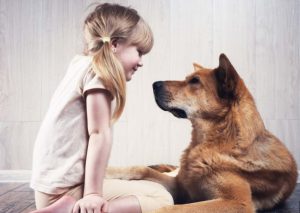
Socialization between dogs and humans is also encouraged through activities like obedience training, which teaches both parties how to effectively interact with each other. Through these lessons, dogs become more comfortable interacting with people and responding appropriately.
Furthermore, research indicates that this type of social interaction can help reduce stress levels in both species while increasing attachment between them. In addition, it has been suggested that when a dog is well-trained,
it tends to demonstrate better self-control under stressful situations due to its increased understanding of boundaries and expectations set by its owner or trainer.
Dogs are also known for exhibiting strong loyalty towards their owners which further strengthens the social bond between them. This loyalty is believed to be influenced by their enhanced sense of smell as well as their ability to form deep attachments with humans over time due solely from everyday interactions such as long walks or snuggles on the couch.

As such, this connection serves as evidence for just how important socialization and bonding play into the life of a domesticated animal who lives among humans rather than in the wild where these types of relationships are rarely formed or necessary for survival.
It’s clear that through generations of human companionship dogs have evolved from being solitary creatures.
Who rely only on themselves into highly sociable animals capable of forming complex relationships with those around them – something that would not be possible without human influence guiding their development along the way.
Pack Mentality
The development of pack mentality in domesticated dogs is an evolutionary adaptation that has been shaped by human influence.
Leadership dynamics and canine behavior are two key components to understanding the evolution and modern-day manifestation of pack mentality among domesticated dogs.
This social structure is most commonly seen when a group of dogs are living together, as they will naturally form into a hierarchy with one or more leaders at the top.
The ability to recognize this structure allows them to cooperate better and work towards common goals, such as finding food or defending their territory.
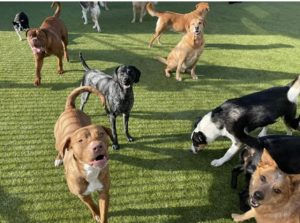
Through selective breeding, humans have further encouraged the development of this pack mentality in domesticated dogs. For example, breeds like German shepherds were bred for specific traits such as loyalty, intelligence and obedience; all necessary attributes for leadership within a canine society.
Similarly, certain breeds were selected for their eagerness to please their handlers and follow instructions; important skills when working with people who wish to train their animals for specific tasks.
Domesticated dogs also display other behaviors associated with pack mentality including howling or barking when another dog enters its territory and even exhibiting dominance over smaller animals in order to establish itself as the alpha member within a particular area.
This behavior can be observed both indoors and outdoors where groups of dogs will often engage in playful activities that involve chasing each other around while establishing their respective places within the social hierarchy.
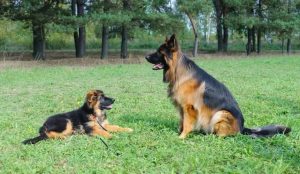
Modern-day societies have continued to utilize these behaviors which help encourage cooperation between humans and their pets while also providing an opportunity for individuals to learn about animal behavior through observation or even training techniques designed specifically for controlling unwanted aggression among multiple animals living together under one roof.
By understanding the development of pack mentality in domestic animals, owners can create environments that promote harmony between members while minimizing potential conflict situations that may arise from introducing new animals into existing packs.
Hunting Skills
Through their evolutionary adaptation, domesticated dogs have developed hunting skills that aid in their ability to survive. Instinctively, they are equipped with a strong sense of smell, which allows them to track scents for miles and detect prey in the environment.
Additionally, honing reflexes such as sight and hearing allow them to pursue the target quickly and efficiently. When combined with powerful jaws, these tools make them capable hunters.
Domesticated dogs can also be trained to hunt on-command thanks to their high level of intelligence. They learn quickly and will strive to please their owners or trainers by exhibiting good behavior while hunting.
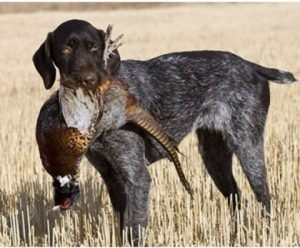
This is made possible by the bond between dog and handler that develops over time through positive reinforcement training methods. With patience and consistency, hunting skills can be taught so that the dog is able to perform tasks when prompted for specific game such as ducks or deer.
The physical fitness of a domesticated dog also plays an important role in its ability to hunt successfully. Dogs need regular exercise—both mental stimulation through activities like obedience classes or agility courses as well as physical activity such as running and playing fetch—in order for muscles to become strong enough for long hunts in tough terrain or extreme weather conditions.
Overall, the natural hunting skills inherent in domestic dogs greatly aid them in survival situations or when performing an enjoyable hobby with an experienced owner-handler team at its side. Properly employed techniques can help both parties achieve success while having fun together outdoors exploring nature’s bounty together.
Natural Instincts
Domesticated canines possess instinctive behaviors that assist in their capacity for survival, such as foraging habits and territorial behavior. The most common of these is the dog’s innate ability to find food and water.
Dogs instinctively use their sense of smell to locate food sources, from trash cans to dumpsters. Additionally, dogs have a natural tendency to mark their territory by urinating on objects in order to ward off predators or other animals encroaching upon it.
In addition, dogs are hardwired with an instinctive aversion towards danger. Dogs will often bark or growl at strangers when unfamiliar people approach them; this helps ward off potential threats and protect them from harm.
Furthermore, when a canine senses something amiss or dangerous nearby, they have an instinctual reaction to flee the situation rather than stand and fight it out. This behavior helps keep them safe while also helping maintain a healthy distance between themselves and potentially dangerous situations.
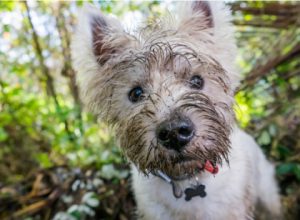
Another primary instinct found amongst domesticated canines is pack mentality; dogs inherently understand that they are part of a larger unit or family group which gives them comfort and security in times of fear or uncertainty.
Dogs rely upon their packmates for safety and protection; this has been observed in both wild canines as well as domestic ones living within human households.
Dogs also possess an innate understanding of social hierarchies within their packs; each member understands its place within the group dynamic which helps create structure amongst members, as well as help foster cooperation between individuals.
Who would otherwise be less likely to cooperate if left alone without structure or guidance from one another. In this way, domesticated canines display numerous instincts that help ensure their survival both independently as well as collectively within groups or families.
Frequently Asked Questions
What is the average life expectancy of a dog?
The average life expectancy of a dog is largely dependent upon its breed and lifestyle.
Generally, purebred dogs tend to have shorter lifespans than mixed breed dogs.
Exercise, socialization and diet also play an important role in determining the longevity of a canine companion.
Exercising regularly and socializing early can help ensure that your pup enjoys the longest lifespan possible.
With proper care and attention, it’s not uncommon for many breeds of dog to live well into their teens or even twenties; providing years of unconditional love and companionship for their owners.
Are dogs capable of understanding human emotions?
Inter-species communication and emotional recognition between humans and dogs is an area of ongoing research.
Studies suggest that dogs are capable of recognizing human emotions through visual cues, such as facial expressions and body language.
Additionally, bodily odors from humans may also provide a form of communication for dogs to understand human emotions.
Interestingly, some research has indicated that not only can dogs detect the emotional states of their owners but also respond by displaying corresponding behaviors in order to provide comfort or relief.
It appears that there is an intricate connection between humans and their canine companions that allows for a unique level of understanding.
What is the best way to train a dog?
Training a dog effectively involves understanding their natural behavior, and using positive reinforcement, socialization techniques and other methods to create desired behaviors.
Positive reinforcement focuses on rewarding good behaviors with treats or praise, while socialization techniques involve familiarizing the dog with other people and animals in order to promote desired behaviors in various situations.
Additionally, it is important to be consistent in training sessions and use clear commands so the animal understands what is expected of them.
What is the best breed of dog for a family with young children?
Satire paints a picture of the perfect family pet: one that is socialized, well-behaved, and loves children.
When it comes to finding the best breed of dog for a family with young children, there are many factors to consider.
Animal behavior experts suggest looking for breeds that have been bred specifically for their friendly nature and ability to socialize easily with people and other animals.
Breeds such as Labrador Retrievers, Golden Retrievers, Poodles, Beagles, and Collies are all known for their gentle temperaments and make excellent companions for families with young children.
Does breed affect a dog’s intelligence?
The influence of breed on a dog’s intelligence is a much-debated topic. Research indicates that while certain breeds may have genetic predispositions to specific traits, socialization effects and neurological development can play an even larger role in a dog’s overall intelligence.
In other words, the quality of care and training that a pup receives can be just as important as its breed when it comes to determining its level of intelligence.
See Also:
- Maricopa Animal Shelter: Saving Lives and Changing Hear
- Willamette Humane Society
- Humane Society Waterville Area – Saving Lives & Hearts
Conclusion
Canines possess an array of natural instincts, providing them with enhanced senses, social communication skills, and pack mentality. These attributes enable them to hunt and survive in the wild.
For example, a Labrador Retriever used its olfactory abilities to detect a rare type of cancer in its owner’s urine sample. This demonstrates how canines use their heightened sense of smell to identify potential threats and alert humans of potential danger.
Furthermore, dogs communicate with one another through body language, vocalizations, and scents that help form strong bonds between members of the pack.
These natural instincts provide canines with the ability to adapt to different environmental situations while remaining loyal companions for humans. Canines have proven their worth as guardians, hunters, rescuers and protectors for thousands of years due to their instinctive behavior.
They continue to amaze us with their remarkable sensory perception as well as their steadfast loyalty and devotion which is why they are considered “man’s best friend”.
Join the Journey, Save Lives: Support bonevoyagedogrescue Today!
